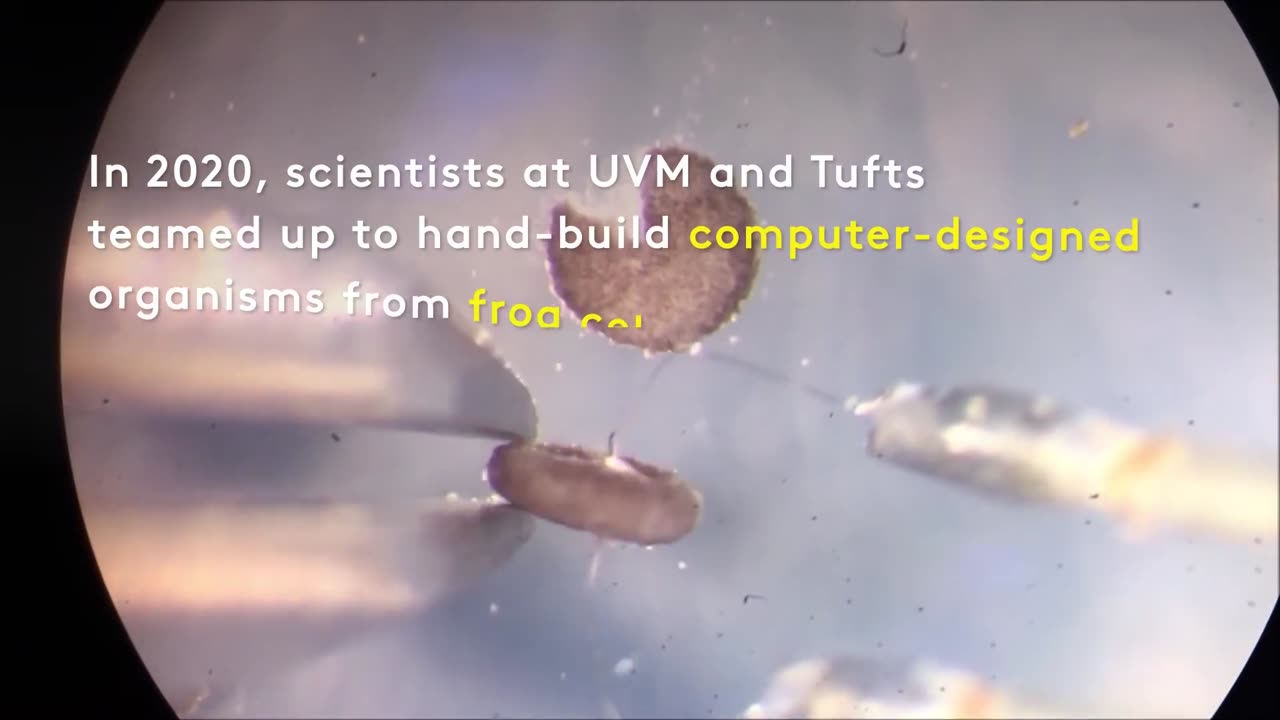Premium Only Content

World’s First Living Robots Can Reproduce
Formed from the stem cells of the African clawed frog (Xenopus laevis) from which it takes its name, xenobots are less than a millimeter (0.04 inches) wide. The tiny blobs were first unveiled in 2020 after experiments showed that they could move, work together in groups and self-heal.
Now the scientists that developed them at the University of Vermont, Tufts University and Harvard University’s Wyss Institute for Biologically Inspired Engineering said they have discovered an entirely new form of biological reproduction different from any animal or plant known to science.
The original study was published here:
Kinematic self-replication in reconfigurable organisms
Almost all organisms replicate by growing and then shedding offspring. Some molecules also replicate, but by moving rather than growing: They find and combine building blocks into self-copies. Here we show that clusters of cells, if freed from a developing organism, can similarly find and combine loose cells into clusters that look and move like they do, and that this ability does not have to be specifically evolved or introduced by genetic manipulation. Finally, we show that artificial intelligence can design clusters that replicate better, and perform useful work as they do so. This suggests that future technologies may, with little outside guidance, become more useful as they spread…
Scientists suggests that Artificial Intelligence remains in control of the robots and is able to postpone loss of replication. In days it can develop new qualities of artificial life.
We find that synthetic multicellular assemblies can also replicate kinematically by moving and compressing dissociated cells in their environment into functional self-copies. This form of perpetuation, previously unseen in any organism, arises spontaneously over days rather than evolving over millennia. We also show how artificial intelligence methods can design assemblies that postpone loss of replicative ability and perform useful work as a side effect of replication. This suggests other unique and useful phenotypes can be rapidly reached from wild-type organisms without selection or genetic engineering, thereby broadening our understanding of the conditions under which replication arises, phenotypic plasticity, and how useful replicative machines may be realized.
-
 LIVE
LIVE
The White House
1 hour agoPresident Trump and Vice President JD Vance Deliver Remarks
555 watching -
 UPCOMING
UPCOMING
The Shannon Joy Show
56 minutes agoTrump & The Terrorist * MAHA Dead In DC? * Winter Weather Warfare: Live Exclusive W/ Dane Wigington
12 -
 UPCOMING
UPCOMING
Grant Stinchfield
23 minutes agoHow Faith, Forgiveness, and Grit Keep the Oldest Among Us Alive and Thriving
-
 1:01:55
1:01:55
VINCE
2 hours agoYoung Men Are Taking The Red Pill (Guest Host Hayley Caronia) | Episode 166 - 11/11/25 VINCE
144K60 -
 LIVE
LIVE
LFA TV
14 hours agoLIVE & BREAKING NEWS! | TUESDAY 11/11/25
4,248 watching -
 DVR
DVR
Nikko Ortiz
2 hours agoPainful Morning Fails... |Rumble Live
8.14K1 -
 LIVE
LIVE
Badlands Media
11 hours agoBadlands Daily: November 11, 2025
3,569 watching -
 1:30:38
1:30:38
Graham Allen
3 hours agoLibs Are SEETHING Over Shutdown Ending!! They’re Turning On Each other!! + Trump Calls Out MTG!!
128K636 -

Wendy Bell Radio
7 hours agoEverything’s A Grift
47.4K93 -
 12:03
12:03
Bearing
5 hours agoTransgender Women BANNED From the Olympics 🦀
15.4K17